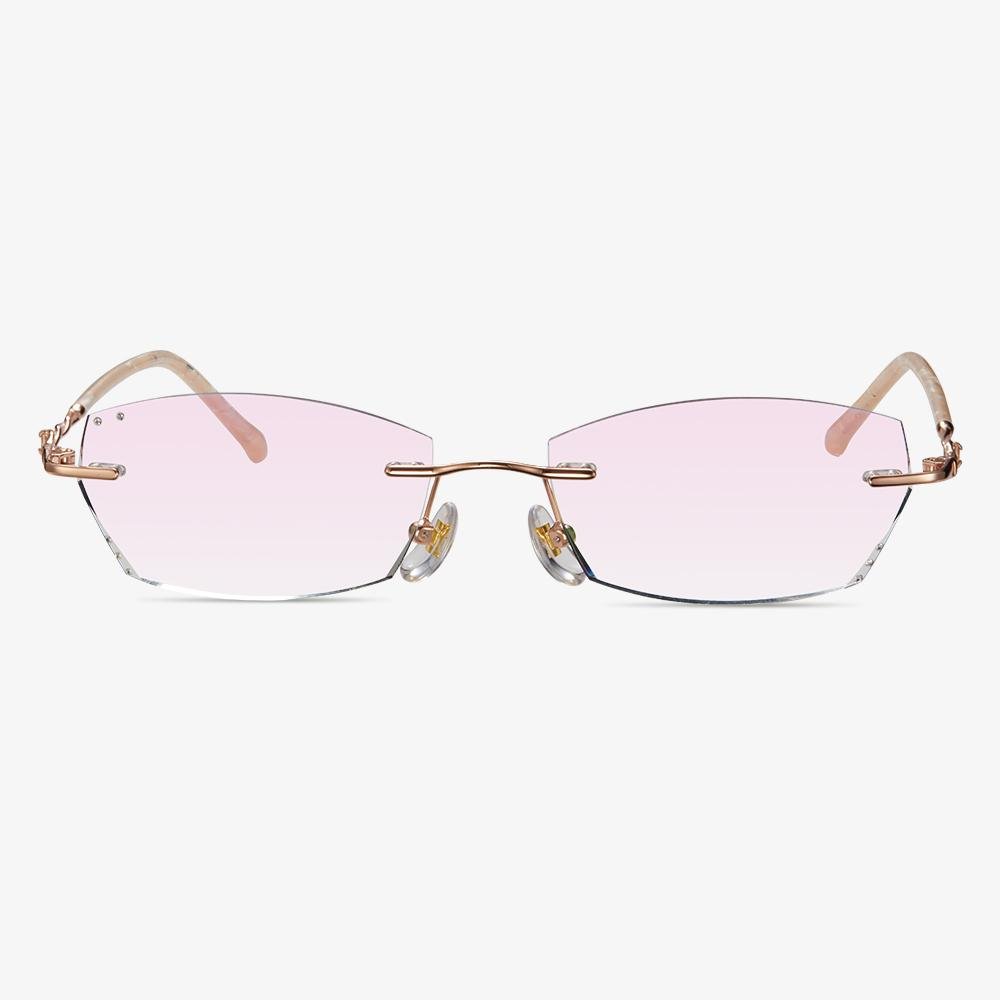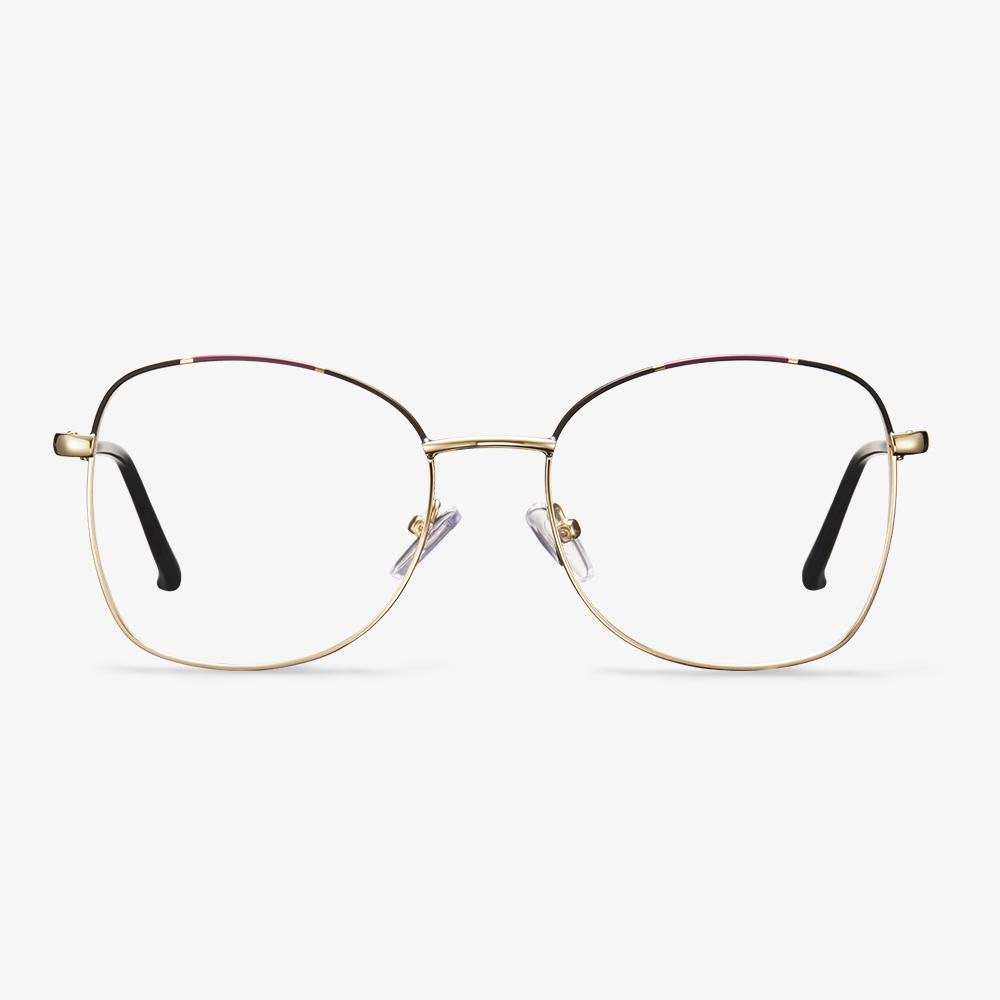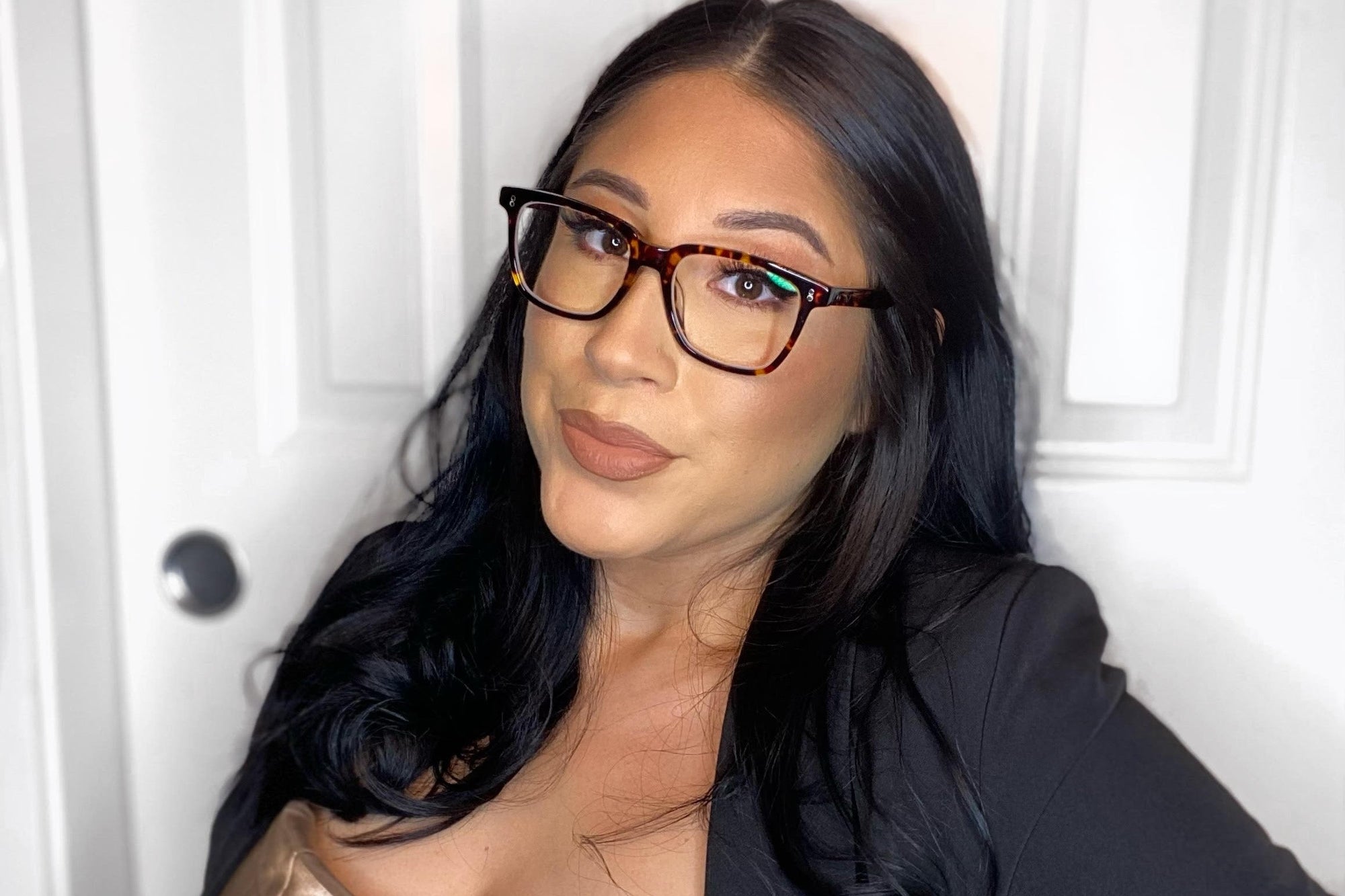Single Vision vs Progressive: What Are Their Differences
In this part, we will show you some differences between single vision and progressive lenses. They differ in several factors, so here we will compare them one by one.
Progressive lenses generally have their reading zones just in the lower half of the lenses, while single vision glasses have the reading power all over the lens. So if you are working on something above your head and you need to see some small details, the progressive lenses will not work. And you can not see through the reading zone in progressive you need to switch to single vision reading glasses.
Single vision glasses are cheap than progressive lenses. Compared to progressive glasses, single vision glasses hold way fewer distortions in the periphery. So, there is no need to customize the lens design to the max. In addition, single vision glasses are often available in the optical store while the progressive often needs to be produced for you. In other words, the delivery time of single vision lenses will be shorter for you.
You can use your progressive glasses optimally just in an upright posture. As soon as you lay down on your couch, this will lead to blurry vision. The reason is your changed position which forces you to look lower through the lenses on the screen. However, with single vision glasses, you can change to an upright position and it would not be a problem anymore. You can position yourself on your couch as comfortably as you want and you can still see clearly with your single vision distance glasses.
Evolution of hard coating technology
The first generation of the use of hard coating technology began in the early 1970s, the quartz material is deposited on the surface of a resin lens under vacuum conditions, form a very hard anti-wear film. However, due to the mismatch between the thermal expansion coefficient and the film base material, it is easy to delaminate and crack the film. Instead, it forms the mottle on the surface of the lens, and the effect is not optimal.
The second generation of hard coating technology is the use of the 1980s. The surface of the resin sheet is coated with a material with high hardness and not easy to be brittle and cracked by an immersion process. At this time, anti-reflection coating lenses had appeared and gained the recognition of consumers, but the mismatch between adding hard coating and anti-reflection coating still caused serious lens wear.
The third generation of hard coating technology was developed in the 1990s, mainly in order to solve the problem of wear resistance after coating resin lenses with an anti-reflection film. The hardened material evolved into a polymer organic matrix material.
Fourth-generation coating technology is dominated by silicon atoms, in which the hardened solution contains both organic substrates. It contains inorganic ultrafine particles, including silicon elements, which make the hard coating not only tough but also hard.
Design principle of progressive multifocal lens
For the same piece of the lens, the top is used to see far, the bottom is used to see close. The upper and lower degrees are different.
There is not a sudden change in the distance degree fixed above the lens to the near degree fixed below the lens, but a gradual transition between the two through gradual changes in refractive power, which has special benefits over common bifocals or trifocal lenses.
The TR90 Spectacle Frame
TR90 frame is a kind of polymer material spectacle frame with memory, no chemical residue is released, and it meets European requirements for food-grade materials. It is currently an internationally popular ultra-light spectacle frame. TR90 frames have the characteristics of super toughness, impact resistance and abrasion resistance, and low friction coefficient, which can effectively prevent damage to the eyes and face caused by the breakage and friction of the frame during sports. Because of its specific molecular structure, it has good chemical resistance, is not easy to deform in high temperature environment, can withstand high temperature of 350 degrees in a short time, and is not easy to melt and burn. Moreover, the TR90 spectacle frame has a lubricating surface with a density of 1.14-1.15. It will float when placed in salt water. It is lighter than other plastic spectacle frames. It is about half the weight of the sheet frame and 85% of the nylon material. It can reduce the burden on the bridge of the nose and ears.
What's wrong with your not clear phone's screen, low brightness, or even black screen when wearing polarized sunglasses?
There is a polarizing plate in the display structure of the mobile phones, which comes from the photoelectric modulation effect of the display screen. There is a polarized light absorption axis in the polarizing plate, which is consistent with the polarized light absorption principle of the polarized sunglasses. If the polarization absorption axes of the two are parallel, the screen can be seen. When they are perpendicular to each other, the light emitted by the screen will be absorbed by the sunglasses, and the light cannot reach the eyes, leading to the phenomenon of the black screen or low brightness. There may be differences in the direction of the absorption axis of the polarizer. So after wearing the polarized lenses, when you see low brightness or black screen, there are two different situations: landscape screen and portrait screen.
How can I measure the frame size?
Use a ruler to measure the glasses you used to wear comfortably and record the width of the frame and the total width in front of the frame. And compared with the frame width of the selected frame and the total front width of the frame. Frame width size difference of one or two millimeters does not matter, and the total front width of four millimeters does not matter. You can use a ruler to measure the approximate distance between the temples. Usually, the width of the inner side of the frame is the same as the temple value or about 3MM larger than the temple value.
You can buy glasses of new eyewear brands.
Some emerging glasses brands are completely independent brands. Their own processing team and the processing instruments are imported instruments. The processed glasses are very standard, and the work is very careful. There are many choices for styles. The most important thing is that the color is good, it is not allergic, it is not easy to fade, and it can go with everything. Whether from their own grade or design, they have their advantages.











































